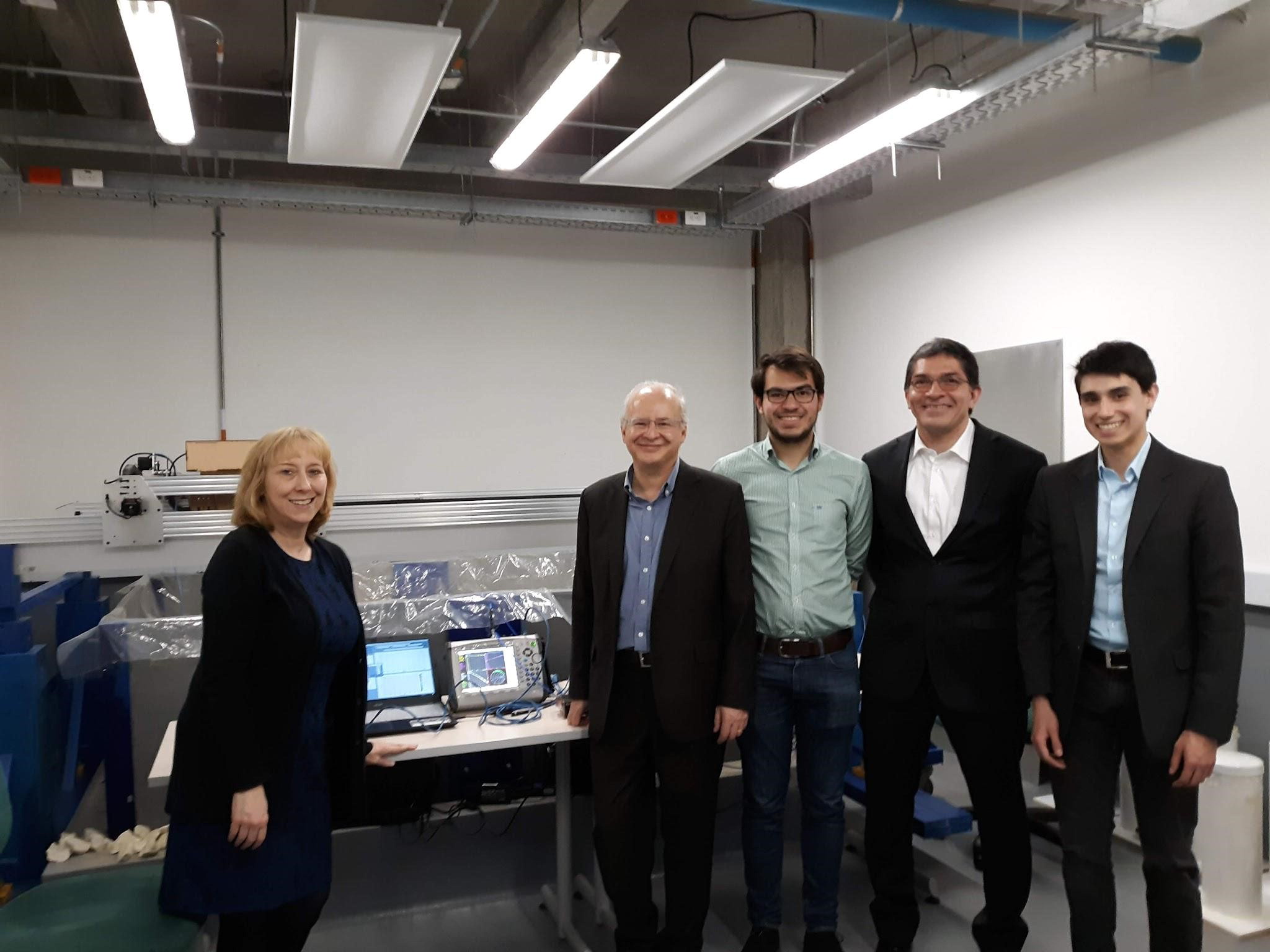Cycle 8 (2019 Deadline)
A database of field-based radar images to assist in the safe removal of landmines in Colombia
PI: Roberto Bustamante Miller (rbustama@uniandes.edu.co), Universidad de los Andes
U.S. Partner: Sarah Kruse, University of South Florida
Project Dates: January 2020 - September 2022
Project Overview
 | | Kelly Robbins (NAS) with PEER PI Roberto Bustamante and his team Nicolás Rocha, Jorge Mario Becerra, and Daniel González in the GPR test lab at UniAndes, March 2020 |
Many of the anti-personnel landmines deployed in Colombian territory are improvised explosive devices (IEDs) of non-standard design and construction. Therefore, traditional detection methods such as metal detectors are not as effective. This PEER project sought to reduce the number of victims of landmines in Colombia by improving the technologies for locating the devices using Ground Penetrating Radar (GPR).
Before this project, there was little available data on GPR for IED detection functioned under the soil and other environmental conditions prevalent in Colombia. Therefore, standard equipment developed by GPR manufacturers was not well-adjusted for field use in the country. Through previous work, the researchers had identified several key pieces of information required to enhance detection with GPR, including radar images of realistic detection scenarios; geological, environmental, and electrical characterization of the fields; and electrical characterization and scattering parameters of the IEDs.
The PI Dr. Bustamante and his team developed a portable field-based GPR for imaging. They also characterized soils and assessed environmental and geological conditions. Working relationships with other NGOs and researchers involved with demining units were also strengthened, with the ultimate aim of the research being to develop these procedures and standards for incorporation into national policies for humanitarian demining. By creating better procedures and providing more information for GPR detection enhancement, this project should facilitate more effective implementation of Colombia’s victims law, thus supporting and providing more secure access to land to develop the rural economy and stabilize conflict areas.
Final Summary of Project Activities
The researchers built a field-based Ground Penetrating Radar (GPR) system for initial use in the laboratory. This work included designing software and hardware of the GPR system and building processing software for the GPR signal, including storing data and basic visualization. They then designed simulation scenarios for the detection of single and multiple objects and evaluated the GPR system and software based on these scenarios. They produced a high quality GPR trace dataset from more than 15 different scenarios and created a public database of GPR field-based measurement for further research.
During their soil characterization studies, the researchers used time-domain reflector (TDR) tools to study differences between measurements and simulations of soil water content. They created a new method, based on simulations, to identify frequency domain response of TDR probes. They also developed a characterization of relative permittivity of soil needed as an input for many imaging algorithms.
As part of the wider work, the researchers implemented migration algorithms to visualize underground objects regardless of their material and machine learning algorithms, some of which show potential to detect and classify landmines in real time. The team produced a document reviewing the current state of Colombia’s mine action program, including its history, some statistics, and an in-depth analysis to give insight for its improvement.
The PEER team designed and assembled a portable GPR robot, 3D printing the custom system parts and comprehensively documenting their work for replication by other interested research groups.
The team reached out to NGOs working on demining activities and organized a variety of events, including a Humanitarian Demining course for undergraduates at the Universidad de los Andes and the 2nd International Science and Technology Congress for Mine Clearance. At the latter, 180 attendees, including Colombian National Army personnel, landmine professionals, researchers, and students, discussed and shared research regarding mine action in areas such as unmanned aerial devices, information systems and machine learning.
Back to PEER Cycle 8 Grant Recipients
| 



